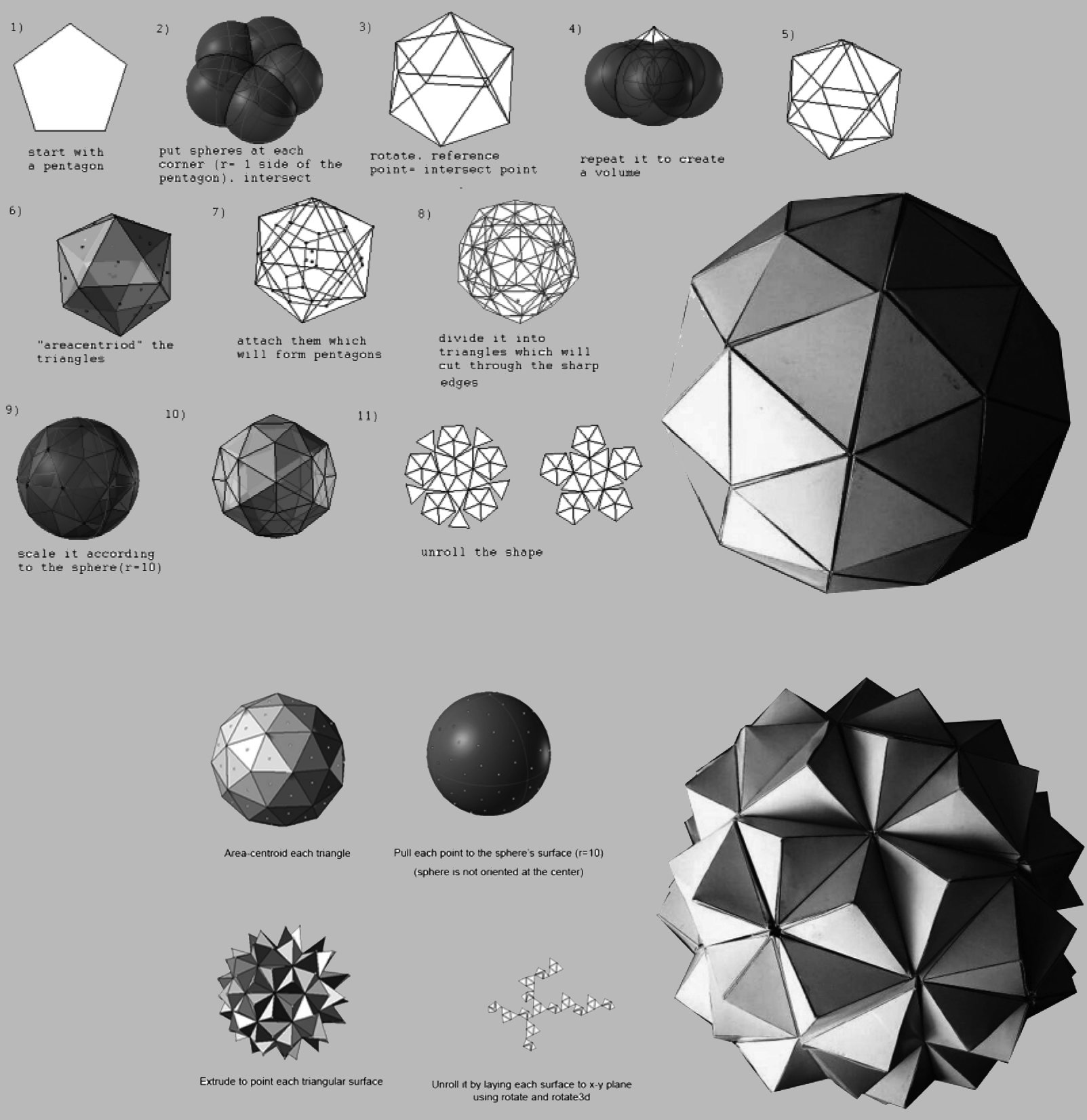New Year Lanterns
Basic Design Studio | Fall 2015 | Istanbul Bilgi University
Project Description
The exercise presented in the paper involves first-year design students at Istanbul Bilgi University's College of Architecture, who were tasked with designing and constructing material systems that serve as lanterns. The exercise was part of the Basic Design Studio, supported by the Design Geometry course, where students first learned the geometric construction logic of Platonic and Archimedean solids using Rhinoceros 3D software. They initially explored unrolling spheres and creating physical models from paper, which helped them understand the transition from digital to physical forms. Building on this, they designed stellated spheres by adding pyramidal components to their discretized sphere surfaces. In the Basic Design Studio, students then applied this geometric knowledge to create 3D self-standing surfaces and ultimately designed lanterns using digital design tools and hands-on material explorations. The lanterns, created in two sizes (40" and 20" diameters), were designed to withstand outdoor conditions and were also developed as do-it-yourself projects, complete with guidebooks and videos, to enhance students' awareness and ability to communicate their design processes. This exercise exemplified the integration of computational thinking and material computing in early design education.
Instructors: Benay Gürsoy, Elif Ensari, Bulut Cebeci, Birgül Çolakoglu
Publications: Gürsoy, B. (2018). Learning to Compute in Design by Making Geometry. Time - Proceedings of the 34th National Conference on The Beginning Design Student 2018. (341st), (online publication). University of Cincinnati Press.
Student Work
In the Design Research Studio: Open-Source Housing Systems, students worked in groups to design housing systems made from a digitally-fabricated kit-of-parts, which can be customized, built, expanded, modified, and disassembled by their occupants without any need for high-level design and/or construction skills. Students built partial large-scale prototypes to test their systems and designed interfaces for customization of the housing units.
Project website built by students: link








